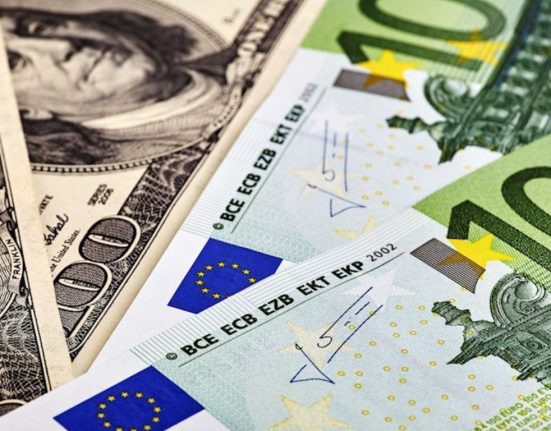Despite its efforts to stabilize, the EUR/USD currency pair continues to face persistent downward pressure, struggling to gain momentum in Wednesday’s trading. The pair is navigating below the critical support level of 1.0700, which indicates an ongoing defensive stance. Traders and investors are closely observing these developments, searching for clues to gauge market sentiment. Given the significant fluctuations experienced by the EUR/USD pair in recent sessions, its current position warrants meticulous attention.
Factors Contributing to the Euro’s Defensive Position
Several factors have contributed to the euro’s current defensive stance against the US dollar. Firstly, concerns surrounding the economic recovery in the Eurozone have weighed heavily on investor sentiment. Despite ongoing efforts to combat the impact of the COVID-19 pandemic, some Eurozone countries are still grappling with growth and stability challenges. Economic data, including GDP figures and employment reports, play a crucial role in shaping market expectations and influencing currency movements.
Strength of the US Dollar Continues to Impact EUR/USD Pair
Another significant factor influencing the performance of the EUR/USD pair is the strength of the US dollar. The US economy has displayed resilience and signs of recovery, bolstered by robust economic indicators and an improving labor market. Consequently, the dollar has garnered support from investors seeking safer assets amidst global uncertainties. The divergence in economic performance between the Eurozone and the United States has contributed to the relative strength of the US dollar, weighing on the euro.
Central Bank Policies and Monetary Divergence Play a Role
Central bank policies and monetary divergence between the European Central Bank (ECB) and the US Federal Reserve also exert influence over the EUR/USD pair. The ECB has maintained an accommodative monetary policy stance to support the economic recovery in the Eurozone. Conversely, the Federal Reserve has signaled a gradual shift toward a tighter monetary policy in response to inflationary pressures. Monetary policy decisions and diverging interest rate expectations can significantly impact currency exchange rates and shape market sentiment.
Global Trade Tensions and Risk Aversion Heighten Euro’s Defensiveness
Global trade tensions and risk aversion further contribute to the defensive position of the euro. Trade disputes between the United States and other major economies, such as China, have generated market uncertainty, leading investors to seek safe-haven assets like the US dollar. Geopolitical tensions, such as Brexit negotiations or political uncertainties within the Eurozone, can also impact the performance of the euro. Heightened risk aversion can cause investors to sell riskier assets, including the euro, in favor of more stable currencies.
Technical Analysis and Key Support Levels Provide Insights
Technical analysis plays a crucial role in understanding the current position of the EUR/USD pair and potential price movements. Traders closely monitor key support and resistance levels to identify potential trend reversals or continuations. The sub-1.0700 zone holds significant importance as a support level for the pair. If the euro fails to regain strength and breaches this level, it could trigger further downside momentum. Conversely, a sustained recovery above this level may signal a potential shift in market sentiment.
Market Outlook and Investor Sentiment Shape EUR/USD Pair’s Trajectory
The outlook for the EUR/USD pair depends on a range of factors, including economic data releases, central bank policies, and geopolitical developments. Market participants will closely monitor upcoming reports, such as inflation figures and employment data, for insights into the health of the respective economies. Any surprises in the data can impact investor sentiment and influence the trajectory of the currency pair. Additionally, shifts in central bank rhetoric or major policy announcements can spark volatility in the forex market.
Conclusion: EUR/USD Faces Persistent Downward Pressure
In conclusion, the EUR/USD currency pair continues to encounter persistent downward pressure, struggling to move above the key support level of 1.0700. Several factors, including concerns regarding the Eurozone’s economic recovery, the strength of the US dollar, central bank policies, and geopolitical tensions, contribute to the defensive position of the euro. Traders and investors will closely monitor these factors to assess the performance of the pair in the coming days. Technical analysis and key support levels will play a significant role in determining potential price movements. Stay informed with the latest updates and market developments to make well-informed decisions when trading the EUR/USD pair.










